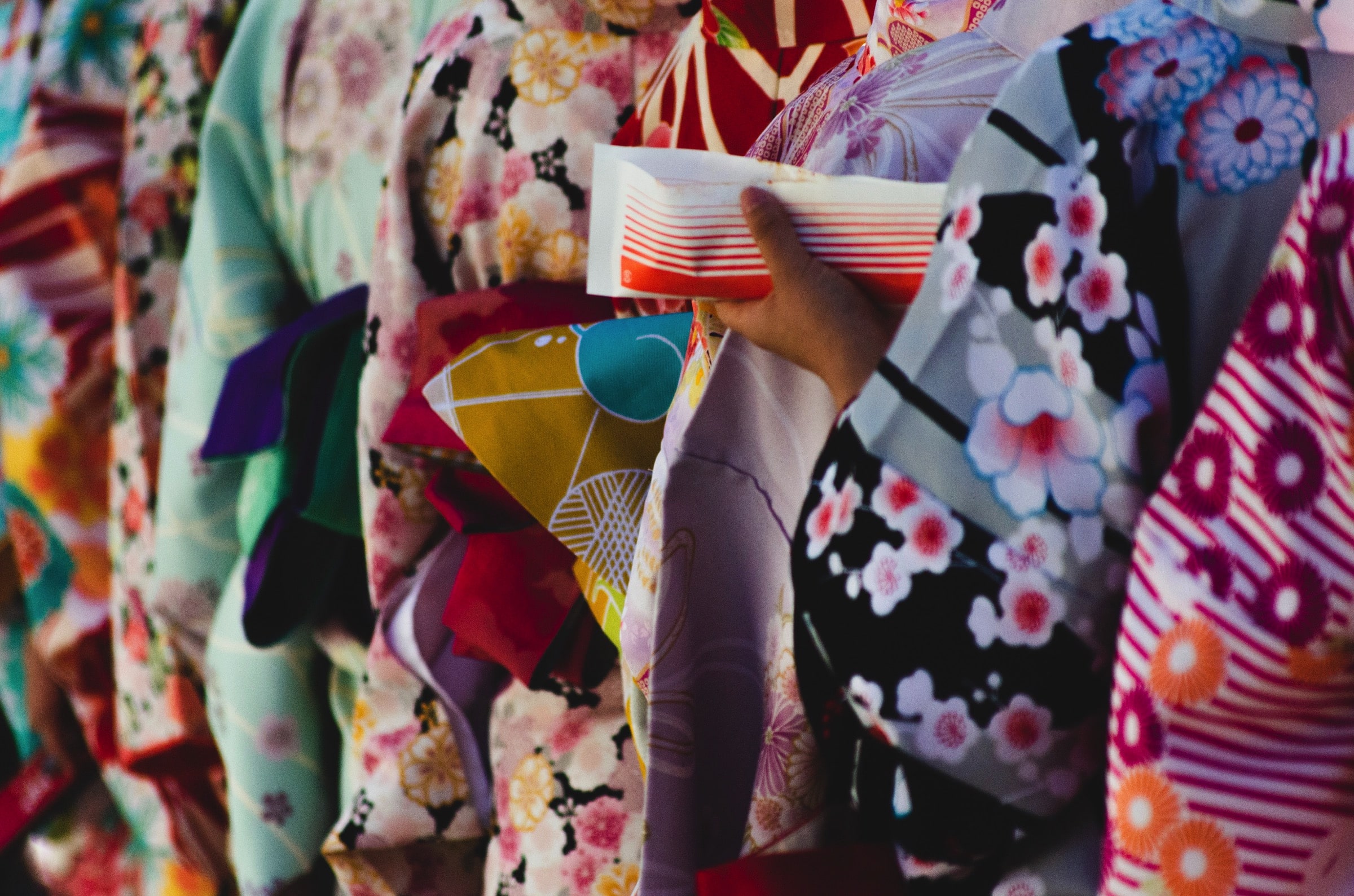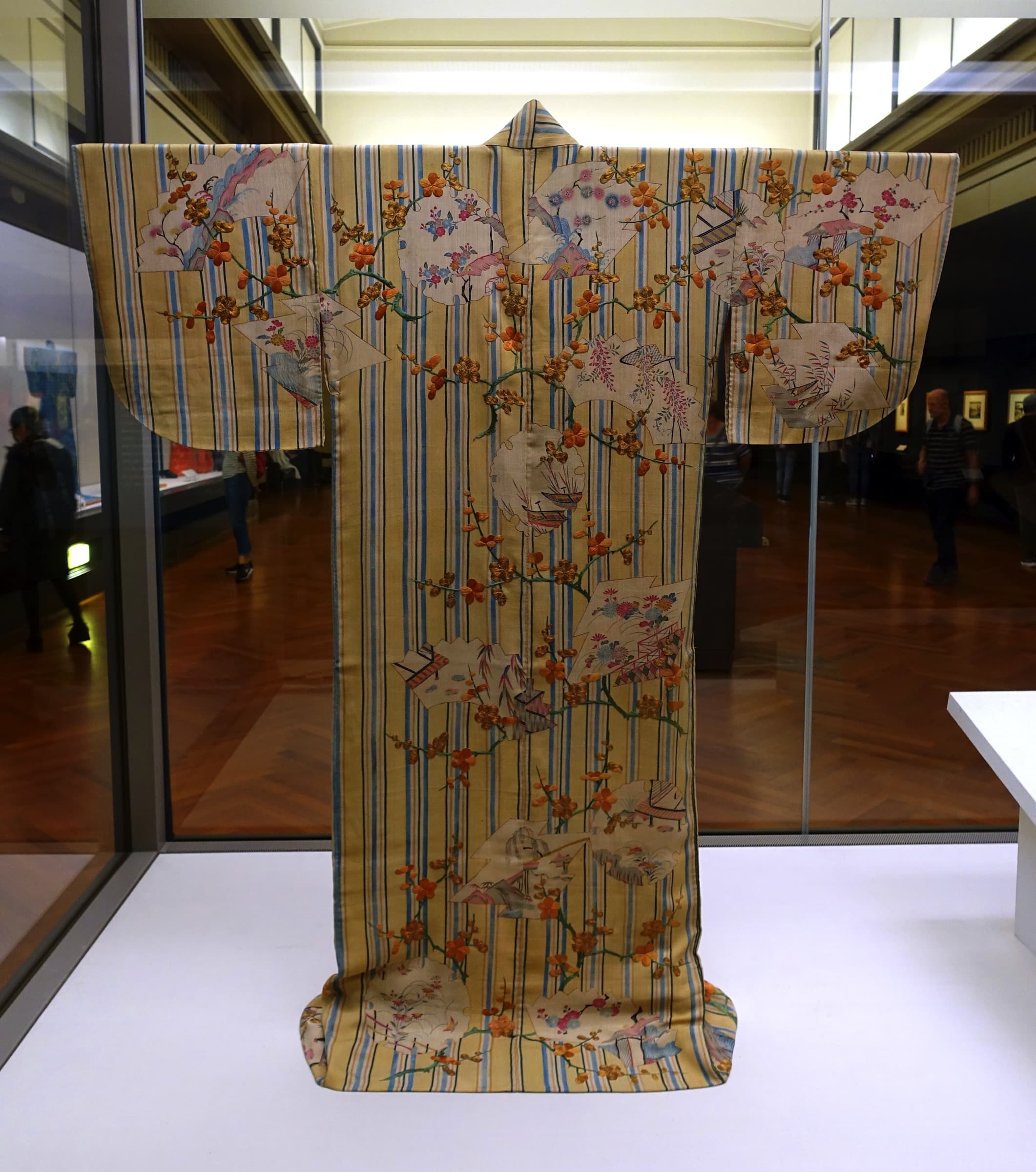The Katagami
Japan has a long tradition in textile printing. Paper stencil printing, called katagami, spread across the archipelago from the 13th century. However, this technique was not fully mastered until a few centuries later, during the Edo period.
Source : https://www.fascinant-japon.com/musee-bourgoin-jallieu-impression-textile/
But what is the Edo period?
The Edo period (江戸時代, Edo jidai?) or Tokugawa period (徳川時代, Tokugawa jidai?) is the traditional subdivision of Japanese history that begins around 1600, with the rise to power of Tokugawa Ieyasu during the Battle of Sekigahara, and ended around 1868 with the Meiji Restoration. It is dominated by the Tokugawa shogunate of which Edo (former name of Tokyo) is the capital.

Katagami (型紙) are stencils used to dye fabrics and print patterns on them. This technique is similar to batik, the Indonesian name for an international practice. Katagami have a big role not only in Japanese culture, but also in Western art.
Source : https://fr.wikipedia.org/wiki/Katagami
The Katazome
Katazome refers to the dyeing technique in which a hand-cut stencil is used in washi paper (made with kozo leaves, the mulberry tree), to create reserve patterns on indigo-dyed fabric. Patterns protected by glue keep the color of the fabric, usually raw cotton. But katazome is also used on silk, linen, and even synthetic fabrics. The resulting fabric is not only used to make kimonos, but also simpler clothes and decorative items.
Source : https://www.plumetismagazine.net/technique-teinture-katazome/

The Shibori
The Shibori dyeing technique is the oldest in Japan among all existing techniques. According to the Shibori Museum in Kyoto, this technique was already practiced in the 7th century.
In summary, this technique consists of forming thousands of small balls with the fabric by hand and surrounding each of them with a very tight thread. This is done in order to mask the fabric in the form of continuous patterns in order to prevent the ink from reaching these specific areas. Once the meticulous work of forming these “pearls” formed by the wound thread, the fabric is immersed in the dye. Then it is boiled in order to fix the pigments permanently in the fabric. Then, it is then washed and rinsed several times to remove the excess ink. In the last step, the fabric is stretched in order to undo the thousands of small pointed or ball formations and to free the white areas, protected from the ink either by a wire twisted around it or by attached plastic sheets.
Yuzen
Yūzen (友禅?) or yūzenzome (友禅染?) is a Japanese textile dyeing craft created by Miyazaki Yûzensai during the Edo period. He uses several processes, such as dyeing with a brush, the protection of zones with wax, like batiks, or even deposits of materials, such as gold leaf.
Appearing in the 17th century, this technique became popular both as a means of circumventing sumptuary laws on clothing fabrics and as a means of improving the quality of clothing. At the time, landscapes and city scenes were common motifs for yūzen-dyed garments.
Three main variants of yūzen stand out: 京友禅 (kyô yūzen), used in the Kyoto and Uji region;加賀友禅 (kaga yuzen), designed in Ishikawa Prefecture; and 江戸友禅 (edo yuzen). Since 1976, yūzen has been recognized and protected by the Japanese government as a traditional craft.

Keisuke Serizawa, great Japanese textile designer
Keisuke Serizawa (芹沢 銈介, Serizawa Keisuke), born May 13, 1895 – died April 5, 1984, was a Japanese textile designer. In 1956, he was named a Living National Treasure of Japan for his katazome method of dyeing stencil. Serizawa visited the Okinawa archipelago several times and learned the bingata dyeing techniques of the Ryūkyū Islands there. Serizawa is also a prominent member of the mingei movement founded by Yanagi Sōetsu. Her traditional art includes kimonos, wallpapers, hanging scrolls, folding screens, curtains, fans and calendars. Serizawa is also the author of many masterpieces of illustrated books. In 1981, the Serizawa Keisuke Municipal Museum of Art was inaugurated in the city of Shizuoka. Another museum, the Serizawa Keisuke Art and Craft Museum opened in 1989 in Sendai.
“The distinctive feature of Serizawa’s katazome method is the use of the starch mixture to create, not a colored area as is usual in the direct dyeing process, but an undyed blank blank that forms part of the pattern and which can then be hand-colored in multi-color or monochromatic as the designer sees fit”.
Source : https://fr.wikipedia.org/wiki/Keisuke_Serizawa
Toba Mika, an artist who combines tradition and creative modernity
Mika Toba is a Japanese katazome dye artist. Her art primarily incorporates motifs and landscapes from Vietnam – a country she has visited more than 50 times since the 1990s. Her art has been exhibited at Kennin-ji Temple in Kyoto and the Museum of Fine Arts in Ho Chi Minh City, among others.
She graduated from Kyoto City University of Arts (M.A.). Toba received the Vietnamese Government’s Cultural Witness Award in 2005 and the Japanese Foreign Minister’s Commendation in 2012 (gaimu daijin hyōei (外務大臣表彰)). She was the subject of an NHK World documentary that first aired in January 2015.